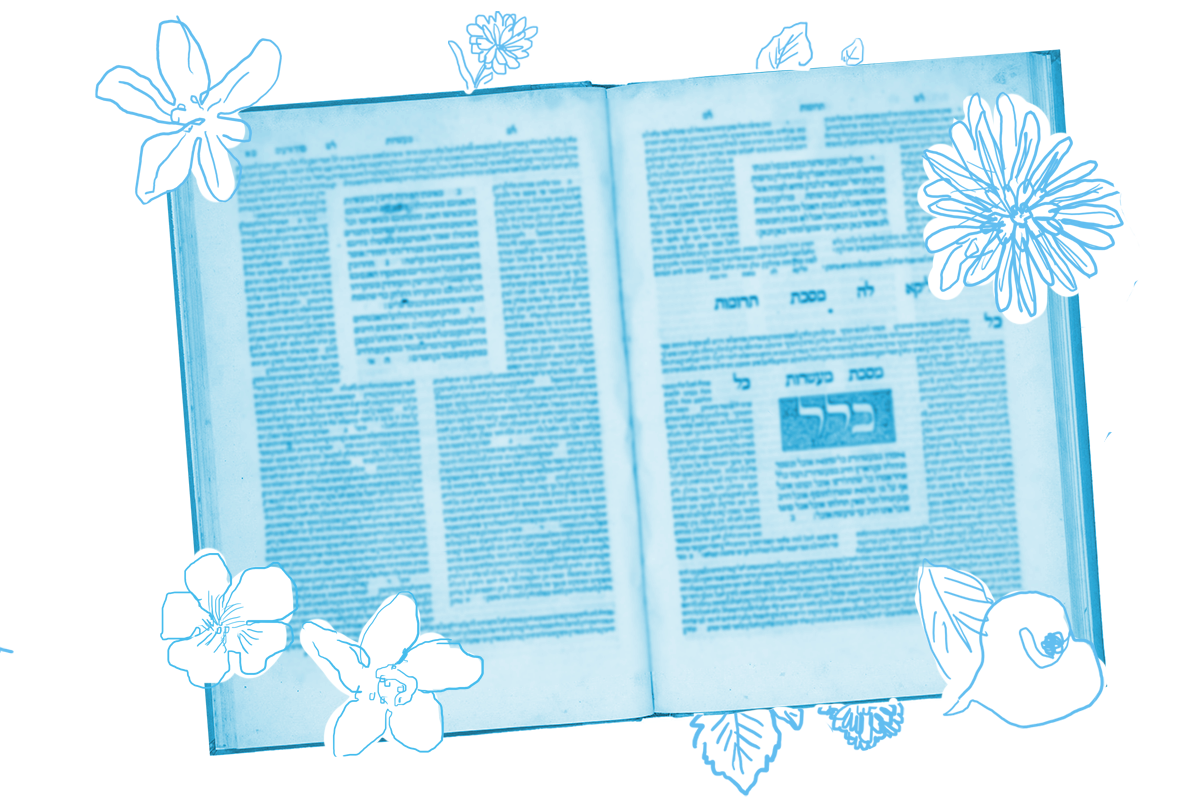Chapter 5 began with the Mishnah’s list of Temple officers who were responsible for various functions. There was an officer to wake the sleeping priests in the morning, another in charge of the lottery to assign jobs to various priests and a third who closed the Temple gates in the evening. Officers were assigned to different kinds of offerings: libations, pairs of birds and so forth. There was an officer who managed the seals which served as proofs of purchase for various sacrifices and other officers who were responsible for music. There was an officer who maintained the Temple curtains and another who kept up the priestly garments. There was even an officer who acted as an in-house doctor and treated priestly intestinal illness. And then there was Ben Beivai, the officer responsible for the paki’ah (“shreds”).
What exactly did Ben Beivai’s job entail? According to one interpretation in our Gemara, he braided shreds of old garments together to prepare wicks for the Temple’s menorah. (The Temple had a huge gold candelabrum with seven branches that was kept perpetually burning. It was the original Jewish menorah — from which the Hanukkah lights draw their inspiration.) Some of the commentators suggest that Ben Beivai was so good at his job that he could calibrate the length of a particular wick to match the length of the night for which it was prepared.
Wick making may not seem like a terribly glamorous job; the following story sheds some light on what we can learn from its inclusion on the list:
Rabbi Yosei came to the town of Kufra and wanted to appoint community leaders to care for the needs of the community and the provisions of the poor. However, those who were selected would not accept the appointment from him, because they deemed this job beneath their dignity.
With your help, My Jewish Learning can provide endless opportunities for learning, connection and discovery.
Rabbi Yosei said to them: Ben Beivai was responsible for the lowly function of the shreds of garments. If this man, who was appointed to deal with the wicks, merited to be listed with the greatest of that generation, you, who are appointed for life-sustaining matters, all the more so are you not honored by the position? You should therefore accept the request without hesitation.
But not everyone agrees that wick management was Ben Beivai’s job; he may have been braiding something very different. Yoma 23 (we’ll get there in about a month!) tells of a priest who cheated during the procedure through which work assignments were made in the Temple and was consequently punished with lashes administered by the person in charge of the paki’ah. In this case, it is clear that paki’ah, which as you may recall means “shreds,” means something like whip-master (because the whip was made of braided shreds of fabric).
If the existence of a Temple whip-master surprises you, it turns out that there are other references to it in the Talmud. For example, Mishnah Middot 1:2 tells of an officer who used to go around checking on the priests who were on night watch. If the priests who were supposed to be on watch didn’t rise immediately and greet this officer, he would presume they sleeping on the job and immediately beat them. (If you’re still shocked, it helps to recall that corporal punishment on the job was common in the premodern world.)
So did Ben Beivai serve as wick-maker or master of the whip? While we cannot know for sure, one could argue that because the text from Shekalim, which is from the Jerusalem Talmud, is closer to the Temple in both place and time, it may be more likely to preserve a kernel of truth — making him a wick-maker. Yoma 23 reports that Abaye also thought this was true, until he learned about the other tradition and changed his mind, adopting the position that Ben Beivai was in charge of lashing misbehaving priests. A reminder that the sages, too, were constantly sorting through received tradition to find clarity.
Read all of Shekalim 14 on Sefaria.
This piece originally appeared in a My Jewish Learning Daf Yomi email newsletter sent on April 4th, 2021. If you are interested in receiving the newsletter, sign up here.



